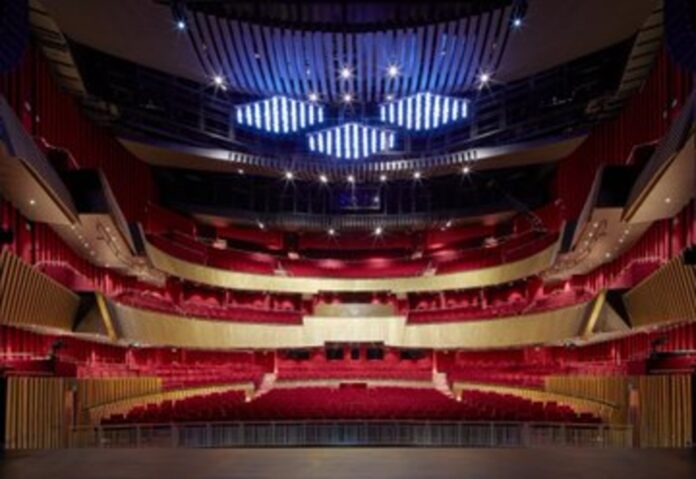
Dance has always migrated, it hybridizes, grafts, travels and transforms itself. Folkloristic and popular dances flourish with itinerant contributions, and contemporary western dance has globalized into a shared and participatory koiné. But also ballet, son of the European Courts, is a tireless migrant, acquired, modified, exported, transferred back and forth.
Giselle, a French-Italian ballet, was born at the Opéra in Paris in 1841 thanks to several artists: Théophile Gautier with Jules-Henry Vernoy de Saint-Georges for the libretto, based on a German story by Heinrich Heine; Adolphe Adam for the music; Jean Coralli (Giovanni Coralli Peracini) and Jules Perrot for the choreography; Carlotta Grisi and Lucien Petipa, a stellar couple of protagonists. This ballet had been lost in the French repertoire since 1868. The success of Giselle, with Willis and ghosts of girls who died of love, was immediate. All of Europe, up to the Holy Russia, demanded to see that ballet which was so successful in Paris, with a very lucky waltz in the score with a leitmotif, receptive to ethnic music.
From St. Petersburg, Giselle was preserved in Russia by Marius Petipa. Then it returned to the West with the Parisian Ballets Russes, with Sergej Diaghilev and the diva Anna Pavlova, the most famous Russian dancer in the early twentieth century.
Up to this point, including a staging in Boston in 1848 with Mary Ann Lee, a student of Coralli in Paris, Giselle lived in the wake of the romantic western culture, which had produced it, with long tutu, pure spirit capable of loving beyond death. An ideal of woman, distilled and sublimated, which took root in a particular era, in a particular taste, in a particular culture.
But Giselle’s journey, as a migrant, takes it overseas, in the body, in the mind, in the character of Alicia Alonso, born in Habana. She meets Giselle in 1943 at the American Ballet, makes its own, and then puts it on stage for the company she founded, the Ballet Nacional de Cuba, with which she danced until 1993. The role of a lifetime. The perfect choreography of Alonso returns to rebound at the Opéra de Paris in 1972 and it also arrives in Italy at the San Carlo in Naples in 1981 with Carla Fracci.

Transmigrating is also changing and a new Giselle, always on Adam’s music, is implanted in Scandinavia, with the modern version by Mats Ek for the Swedish Cullberg Ballet in 1982. In the first act she is a peasant girl who desires the elegant man who lets herself be seduced by her and her erotic naivety, without prejudice. In the second act she is in a psychiatric hospital, in a straitjacket, with her companions whose fates he shares. The man who wanted with all of herself repents and lays bare, desperate. The Paris Opera in 1993 and the Scala in Milan in 1997 also set up this version, alongside the classic version.
The Sheikh Jaber Al-Ahmed Cultural Center in Kuwait City has just hosted the Milan’s company with Giselle by Coralli-Perrot, cured by the greatest French interpreter of the twentieth century, Yvette Chauviré, conquering the great audience of a very modern theater.
The female figure of a devoted and in love woman is transversal to cultures and the long tutus in the night forest are the symbol of a redeeming and devoted femininity, which overcomes Eros in the name of moral duty and with the power of sentiment.
For this reason, in addition to Cuba blanquinegra, “transatlantic” America and Africa have also been conquered by a girl from a village in Central Europe, who could be disillusioned in the same way in any country and at any time.

In the USA, Giselle creole, the black version of the Dance Theater of Harlem, made us debate fiercely, in the 80s, on the legitimacy of placing history on a cotton plantation, with a seducer-master.
Giselle has also found a home in South Africa, with Dada Masilo who studied in Brussels: she lives in a Zulu village, dances with Afro-contemporary steps and does not forgive betrayal; she kills the ungrateful man and joins her companions in red for revenge.
Finally, in England the “contemporary global dance” version of the Anglo-Indian Akram Khan, virtuoso of Kathak, for the English National Ballet directed by the Spanish “feminist” Tamara Rojo, puts in the hands of the afterlife shadows long sticks, on a music that quotes Adam to allude to the violence of inequalities on exploited migrant women. Hope and forgiveness, however, are possible here in Giselle’s generous soul.







